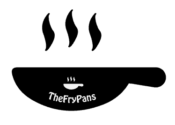GREEN OMELET
Blend plenty of green goodness and spices into eggs and then turn the mixture into an omelet. INGREDIENTS 2 eggs 1 scoop Green Qi Handful fresh greens 1 tsp ground turmeric 1/2 tsp smoky paprika 2 tsp cold-pressed olive oil or coconut oil Himalayan salt to taste 1/4 cup almond pesto FOR THE PESTO: 2 [...]




